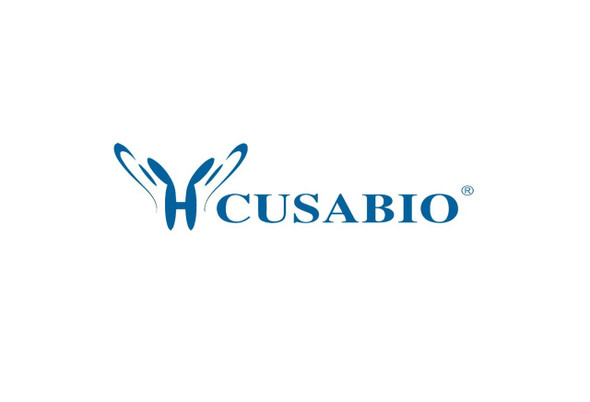Cusabio Mouse Recombinants
Recombinant Mouse Three-prime repair exonuclease 1 (Trex1) | CSB-EP821009MO
- SKU:
- CSB-EP821009MO
- Availability:
- 3 - 7 Working Days
Description
Recombinant Mouse Three-prime repair exonuclease 1 (Trex1) | CSB-EP821009MO | Cusabio
Alternative Name(s): 3'-5' exonuclease TREX1
Gene Names: Trex1
Research Areas: Epigenetics and Nuclear Signaling
Organism: Mus musculus (Mouse)
AA Sequence: MGSQTLPHGHMQTLIFLDLEATGLPSSRPEVTELCLLAVHRRALENTSISQGHPPPVPRPPRVVDKLSLCIAPGKACSPGASEITGLSKAELEVQGRQRFDDNLAILLRAFLQRQPQPCCLVAHNGDRYDFPLLQTELARLSTPSPLDGTFCVDSIAALKALEQASSPSGNGSRKSYSLGSIYTRLYWQAPTDSHTAEGDVLTLLSICQWKPQALLQWVDEHARPFSTVKPMYGTPATTGTTNLRPHAATATTPLATANGSPSNGRSRRPKSPPPEKVPEAPSQEGLLAPLSLLTLLTLAIATLYGLFLASPGQ
Source: E.coli
Tag Info: N-terminal 10xHis-tagged and C-terminal Myc-tagged
Expression Region: 1-314aa
Sequence Info: Full length
MW: 41.1 kDa
Purity: Greater than 85% as determined by SDS-PAGE.
Relevance: Major cellular 3'-to-5' DNA exonuclease which digests single-stranded DNA and double-stranded DNA with mismatched 3' termini. Prevents cell-intrinsic initiation of autoimmunity. Acts by metabolizing DNA fragments from endogenous retroelements, including L1, LTR and SINE elements. Unless degraded, these DNA fragments accumulate in the cytosol and activate the IFN-stimulatory DNA response and innate immune signaling. Prevents chronic ATM-dependent checkpoint activation, by processing ssDNA polynucleotide species arising from the processing of aberrant DNA replication intermediates. Inefficiently degrades oxidized DNA, such as that generated upon antimicrobial reactive oxygen production or upon absorption of UV light. During GZMA-mediated cell death, contributes to DNA damage in concert with NME1. NME1 nicks one strand of DNA and TREX1 removes bases from the free 3' end to enhance DNA damage and prevent DNA end reannealing and rapid repair.
Reference: "Excision of 3' termini by the Trex1 and TREX2 3'-->5' exonucleases. Characterization of the recombinant proteins." Mazur D.J., Perrino F.W. J. Biol. Chem. 276:17022-17029(2001)
Storage: The shelf life is related to many factors, storage state, buffer ingredients, storage temperature and the stability of the protein itself. Generally, the shelf life of liquid form is 6 months at -20?/-80?. The shelf life of lyophilized form is 12 months at -20?/-80?.
Notes: Repeated freezing and thawing is not recommended. Store working aliquots at 4? for up to one week.
Function:
Involvement in disease:
Subcellular Location:
Protein Families:
Tissue Specificity:
Paythway:
Form: Liquid or Lyophilized powder
Buffer: If the delivery form is liquid, the default storage buffer is Tris/PBS-based buffer, 5%-50% glycerol. If the delivery form is lyophilized powder, the buffer before lyophilization is Tris/PBS-based buffer, 6% Trehalose, pH 8.0.
Reconstitution: We recommend that this vial be briefly centrifuged prior to opening to bring the contents to the bottom. Please reconstitute protein in deionized sterile water to a concentration of 0.1-1.0 mg/mL.We recommend to add 5-50% of glycerol (final concentration) and aliquot for long-term storage at -20?/-80?. Our default final concentration of glycerol is 50%. Customers could use it as reference.
Uniprot ID: Q91XB0
HGNC Database Link: N/A
UniGene Database Link: N/A
KEGG Database Link: N/A
STRING Database Link: N/A
OMIM Database Link: N/A






